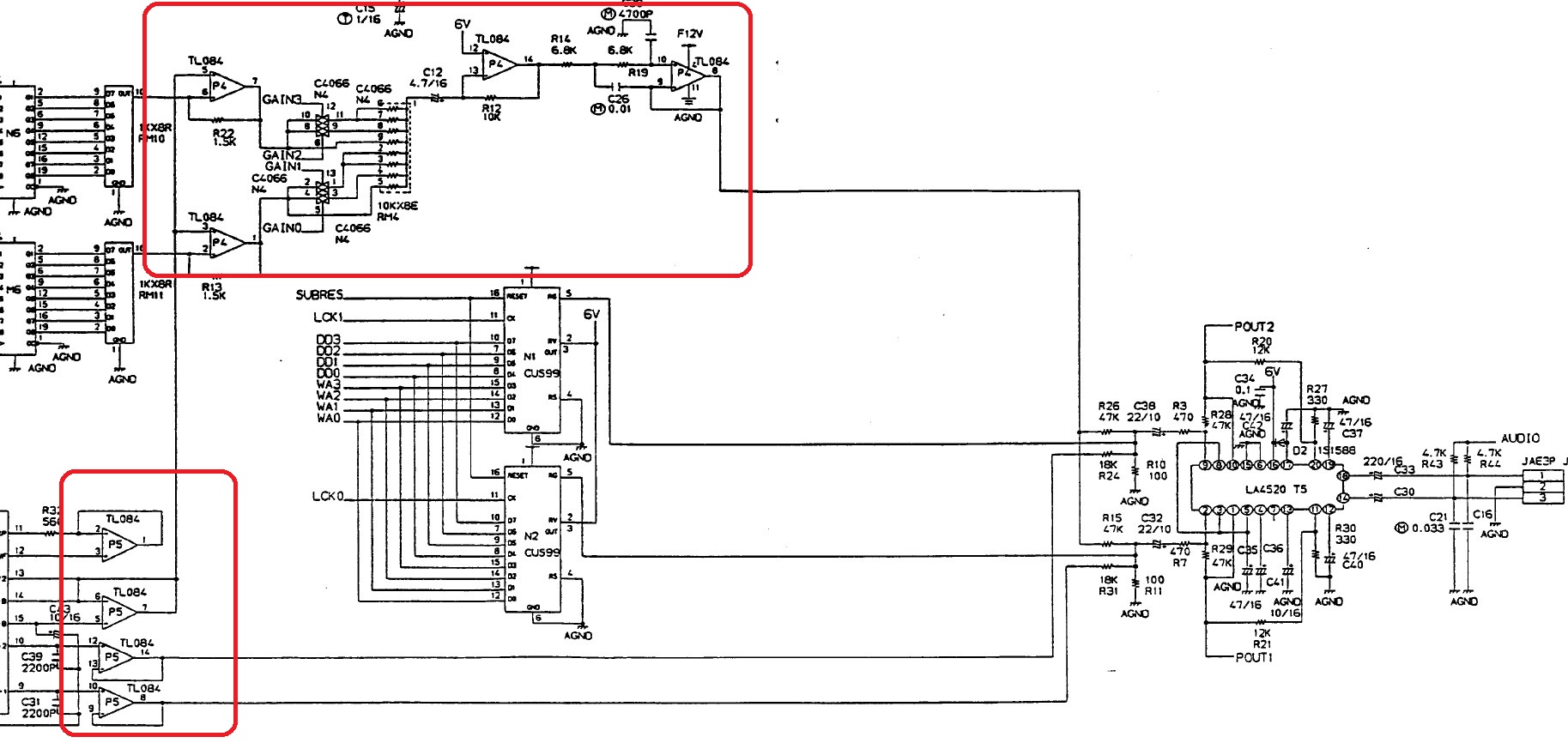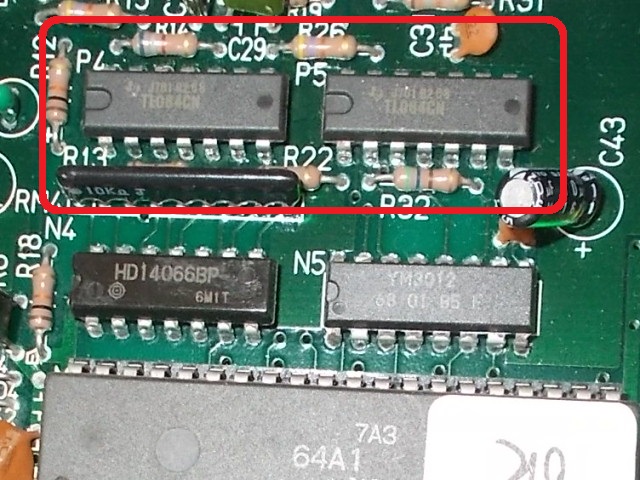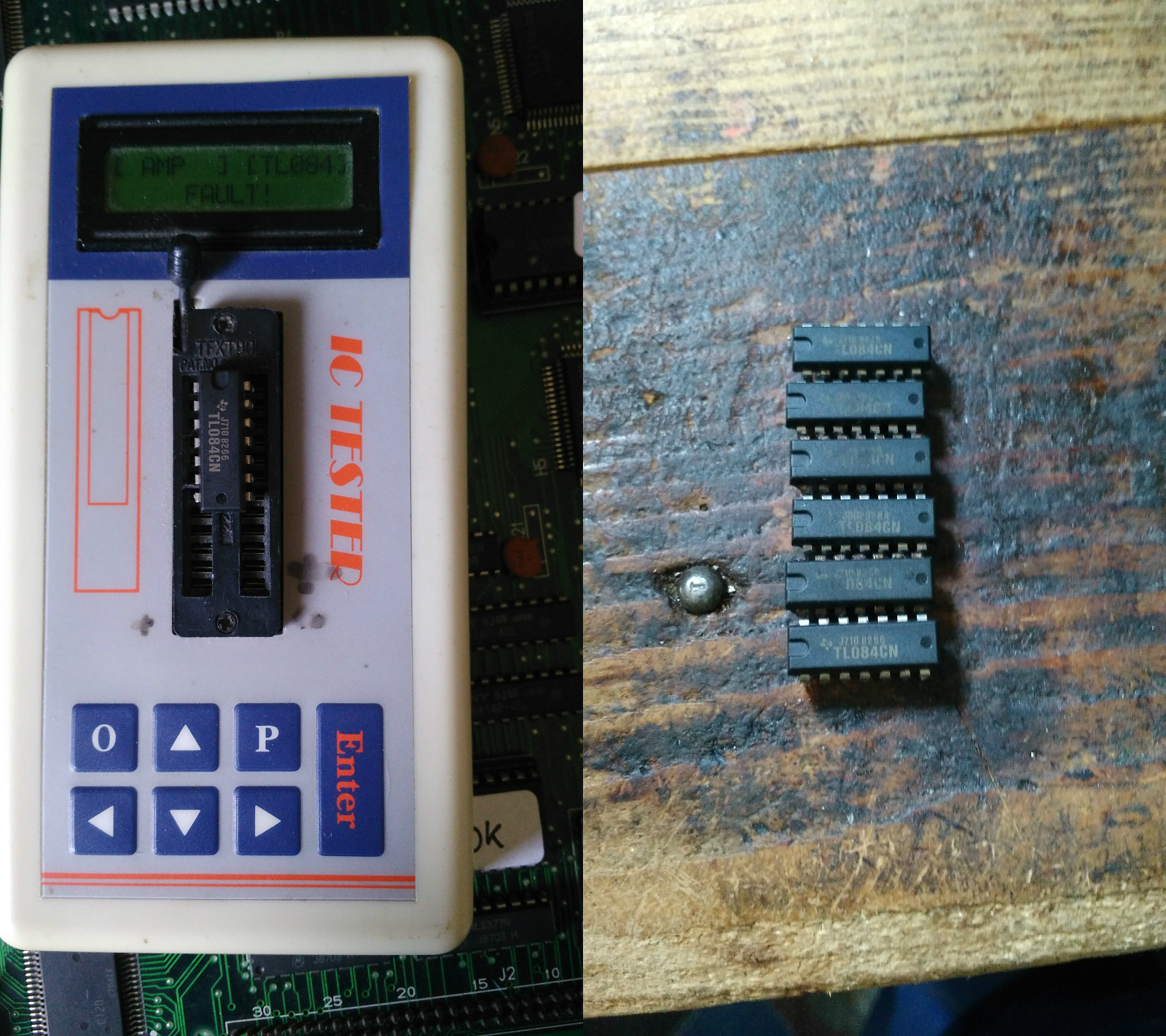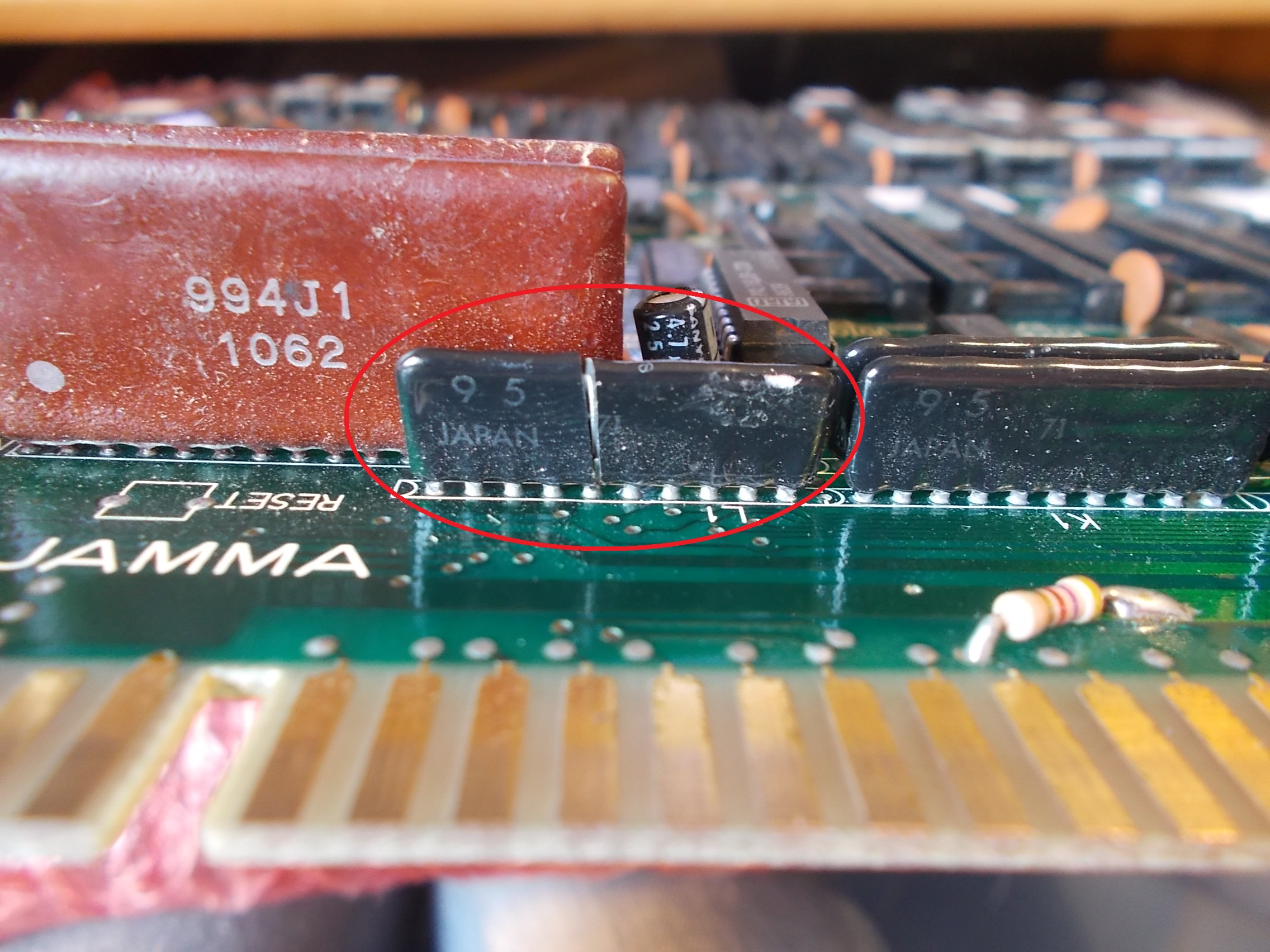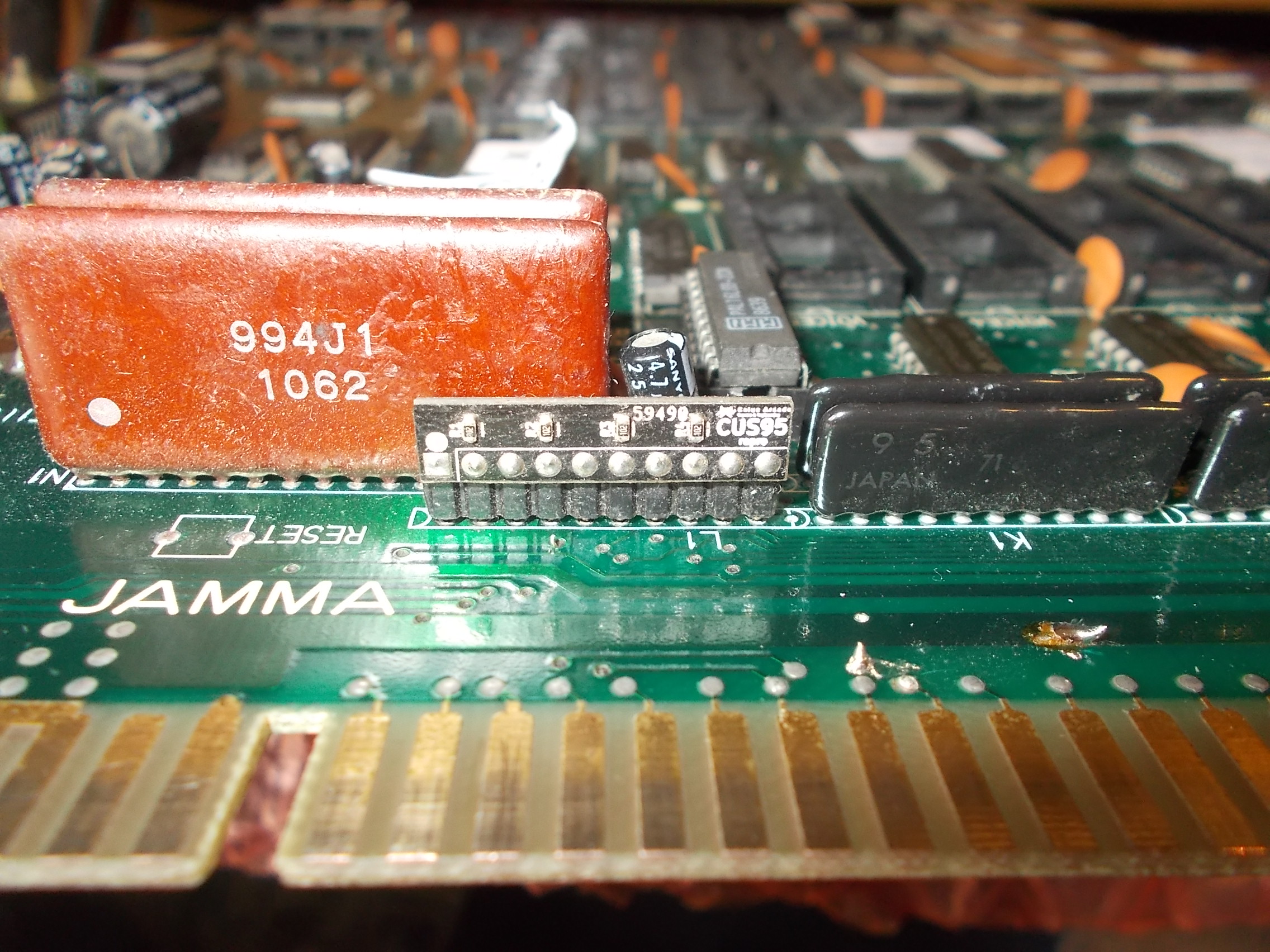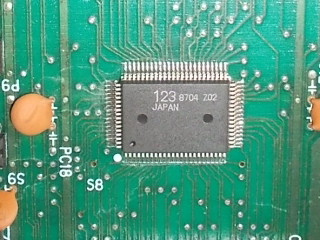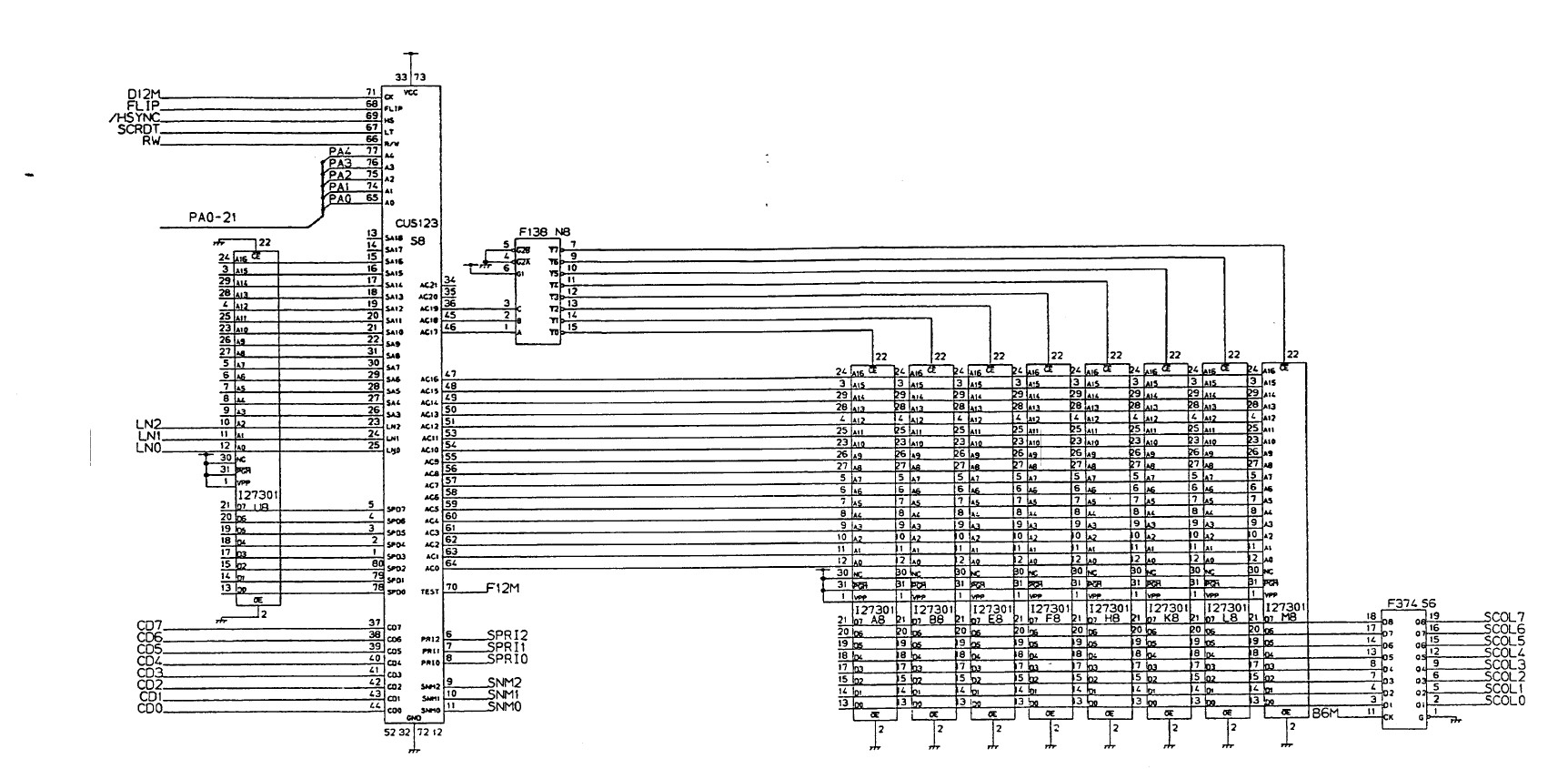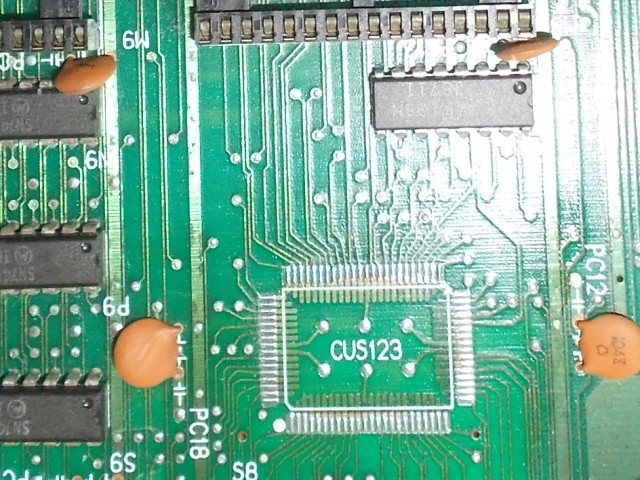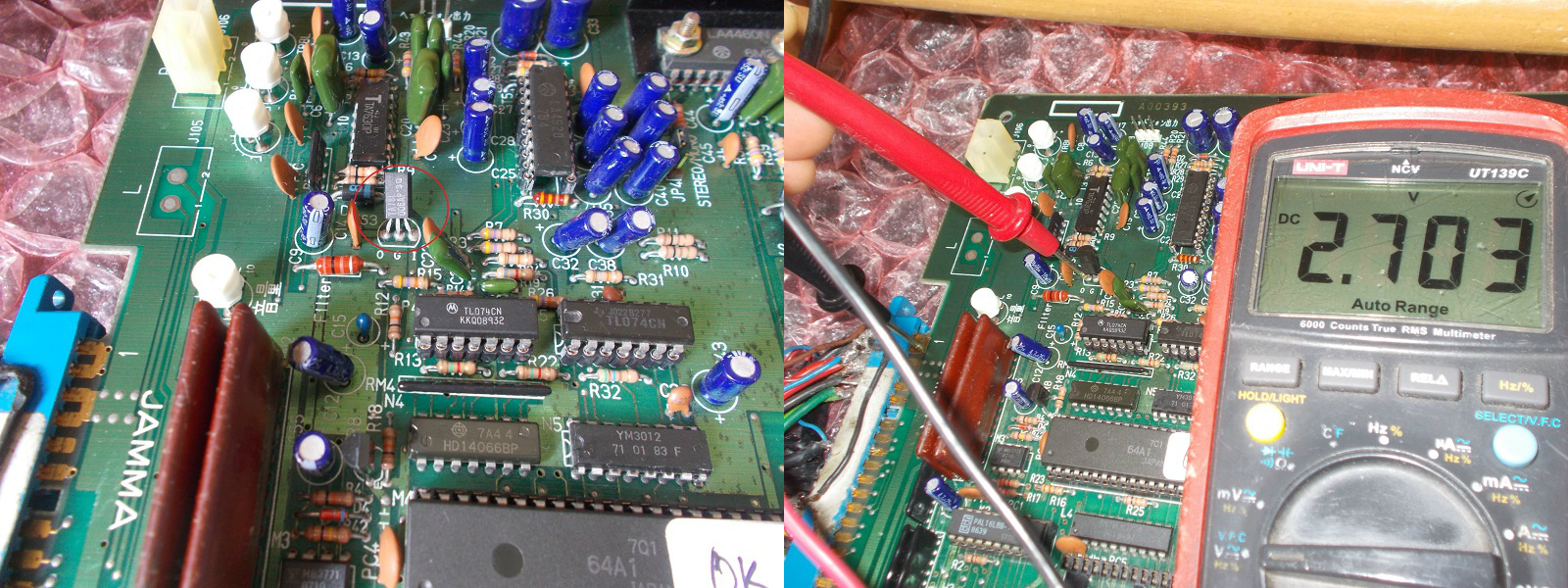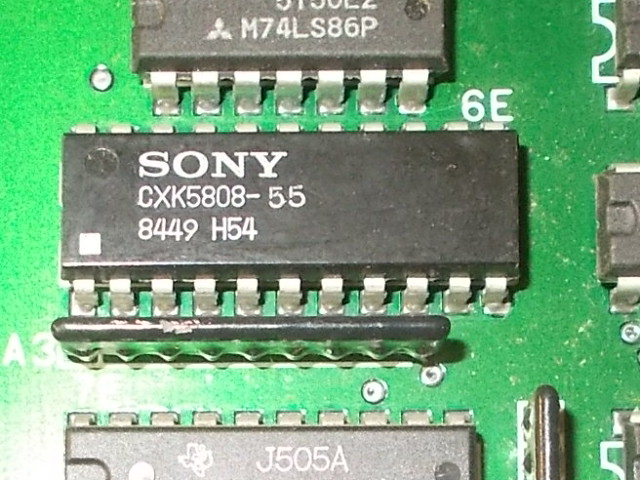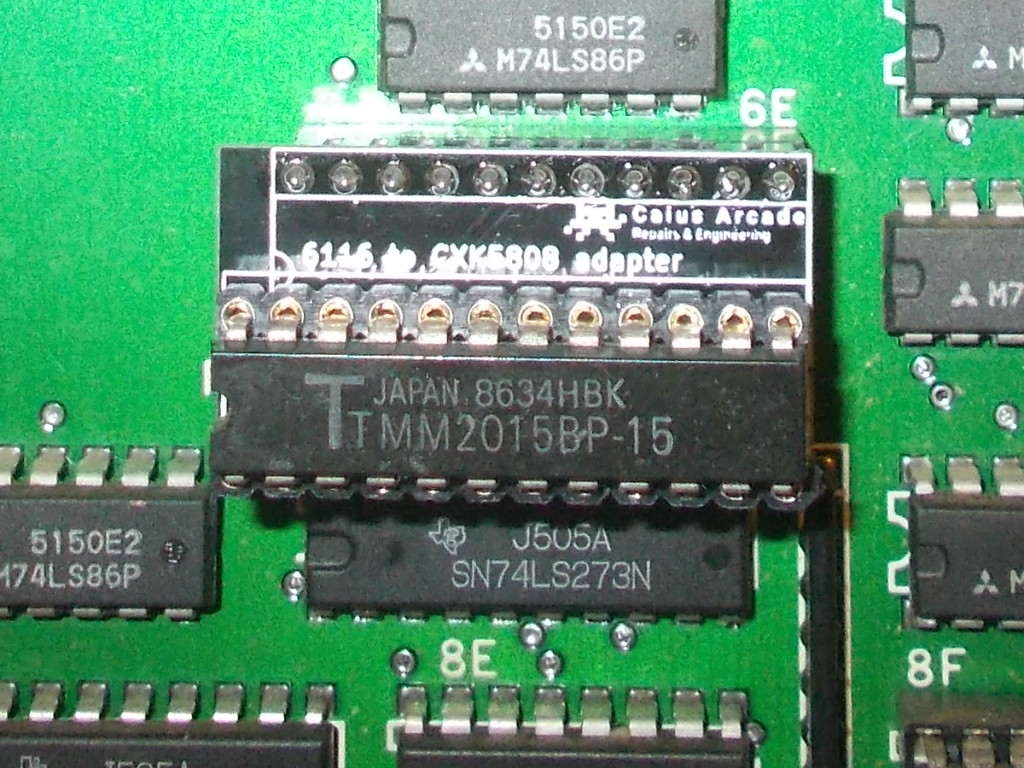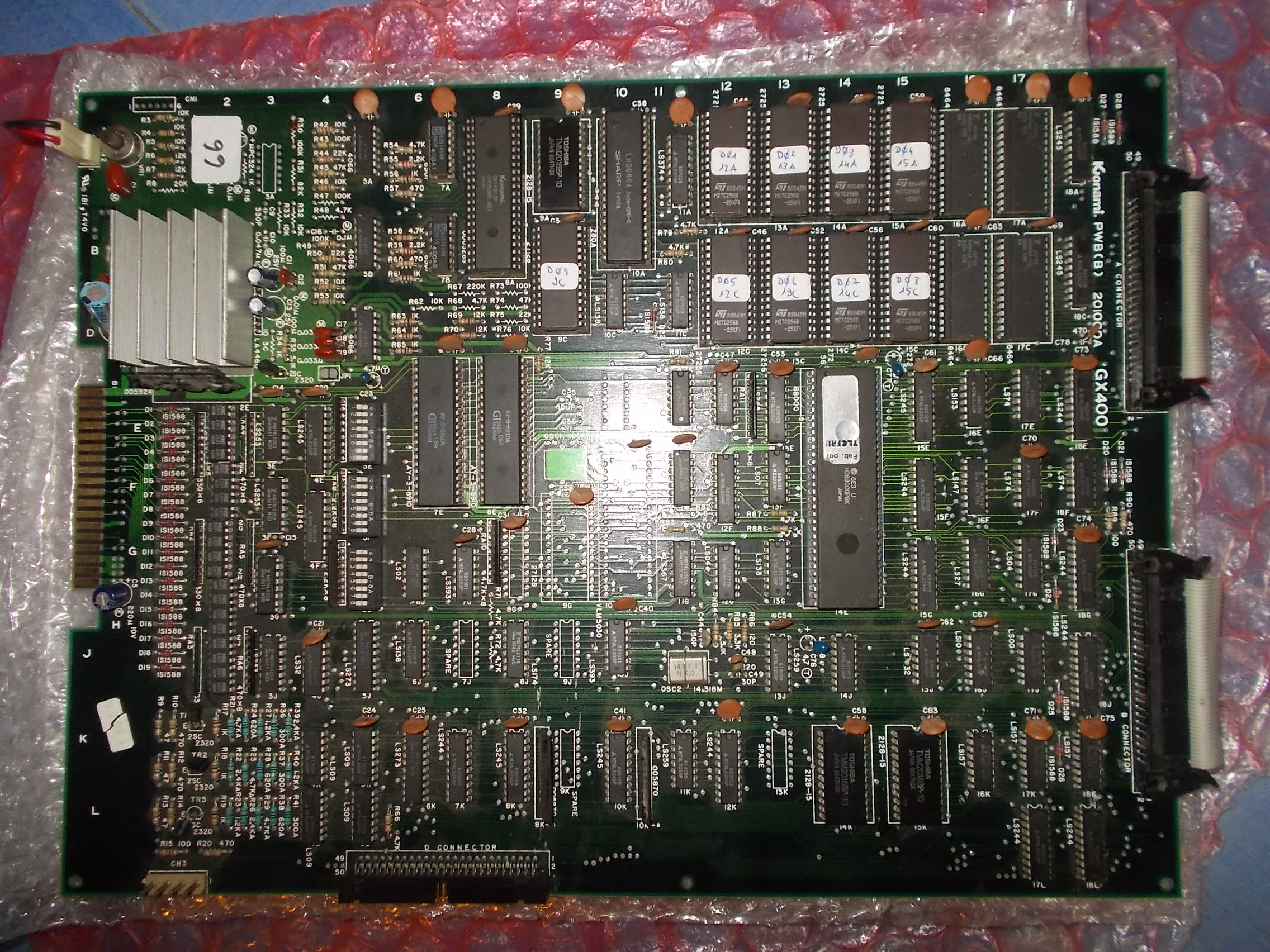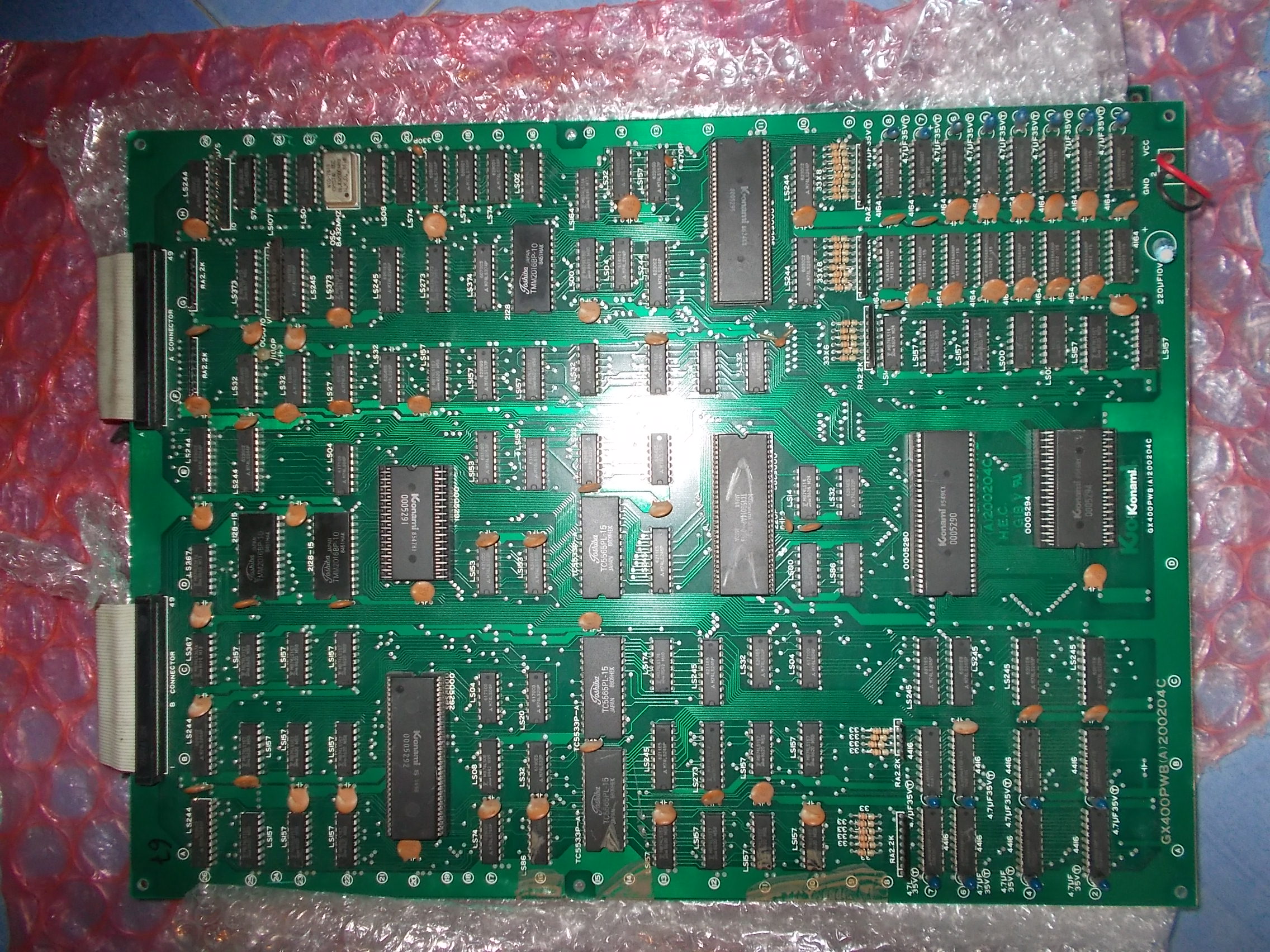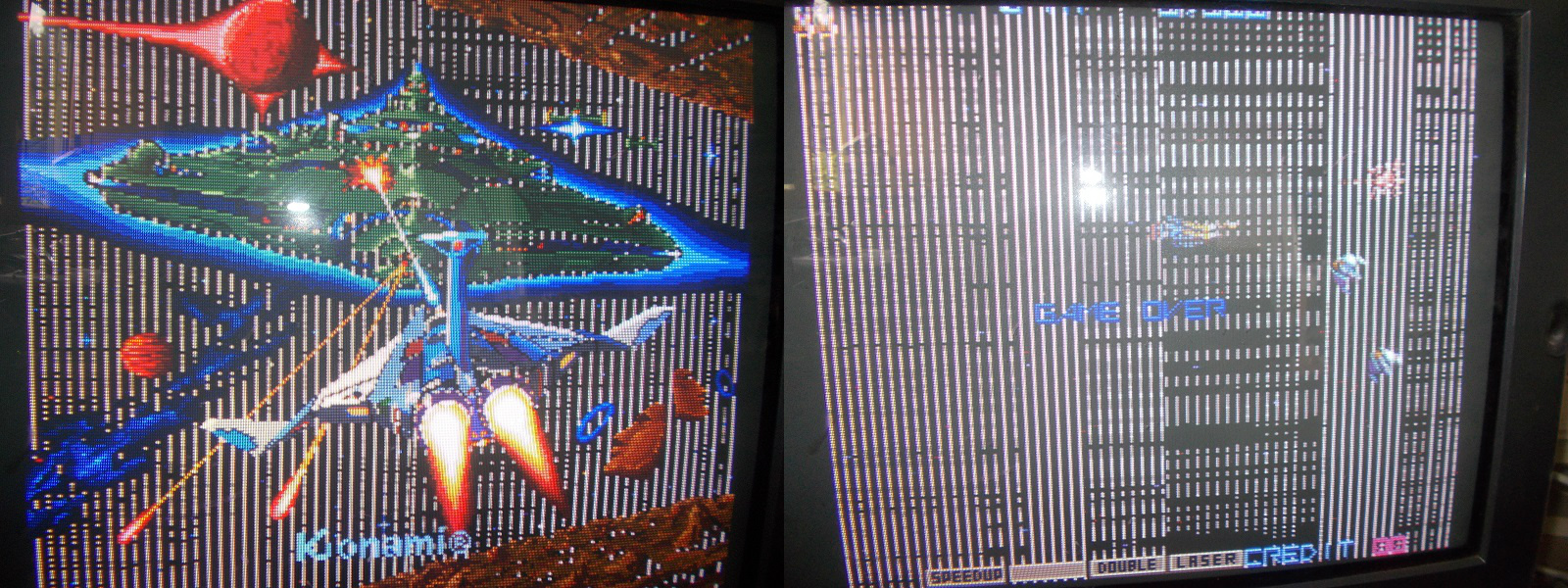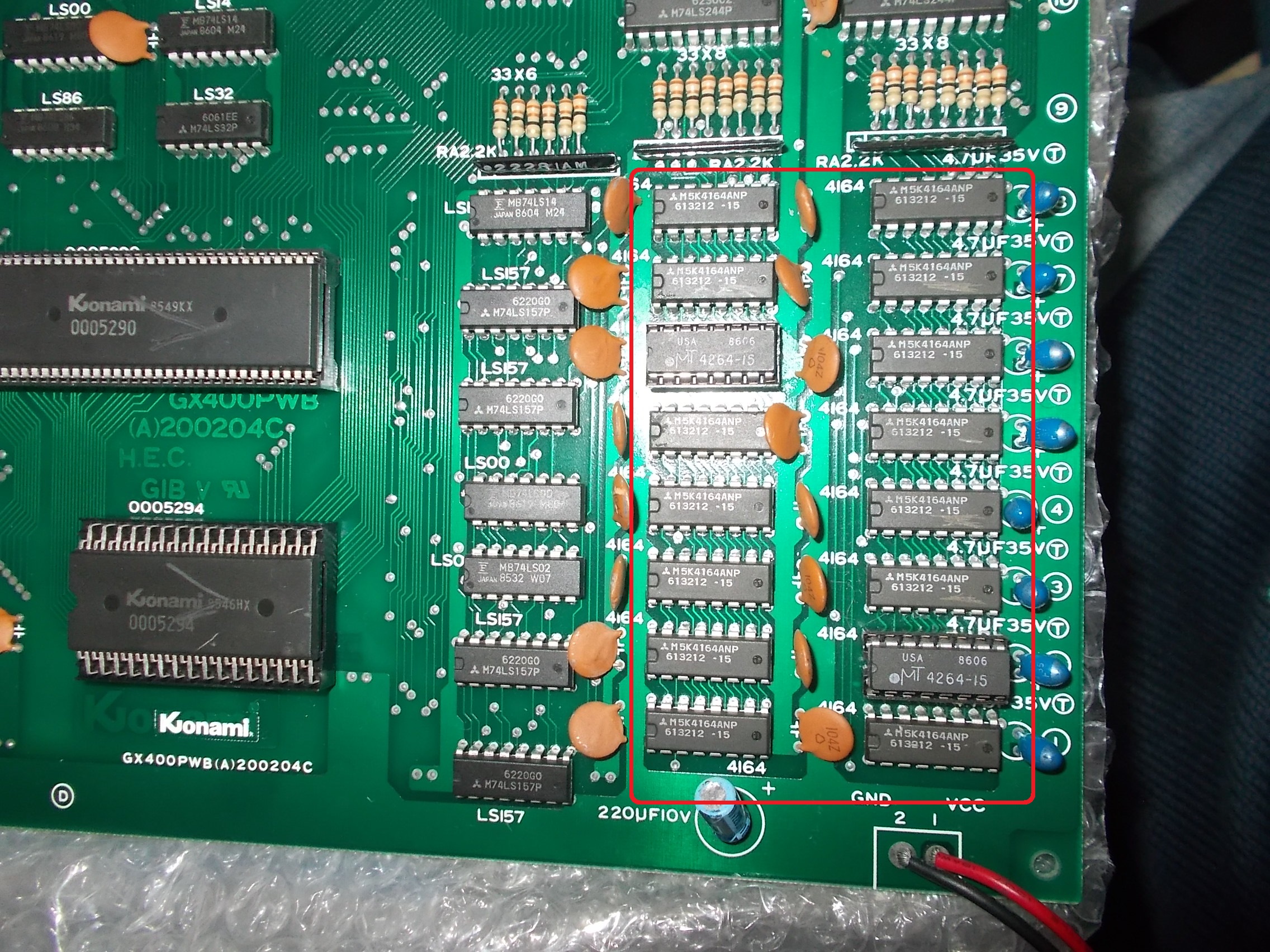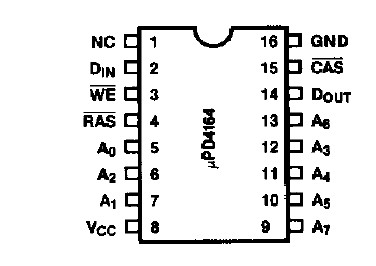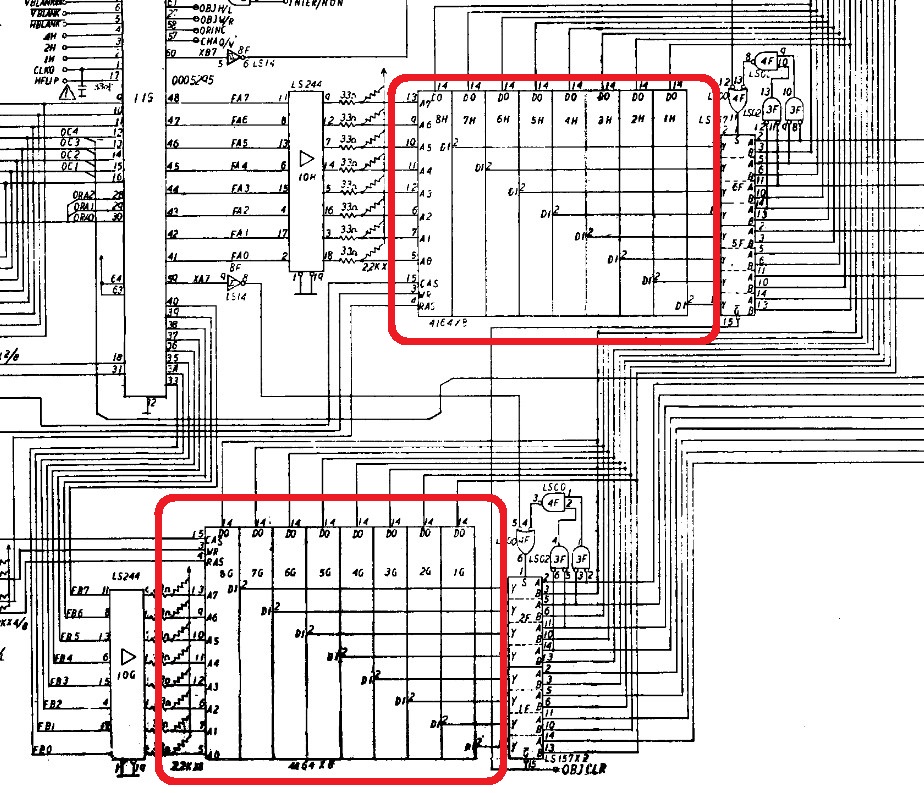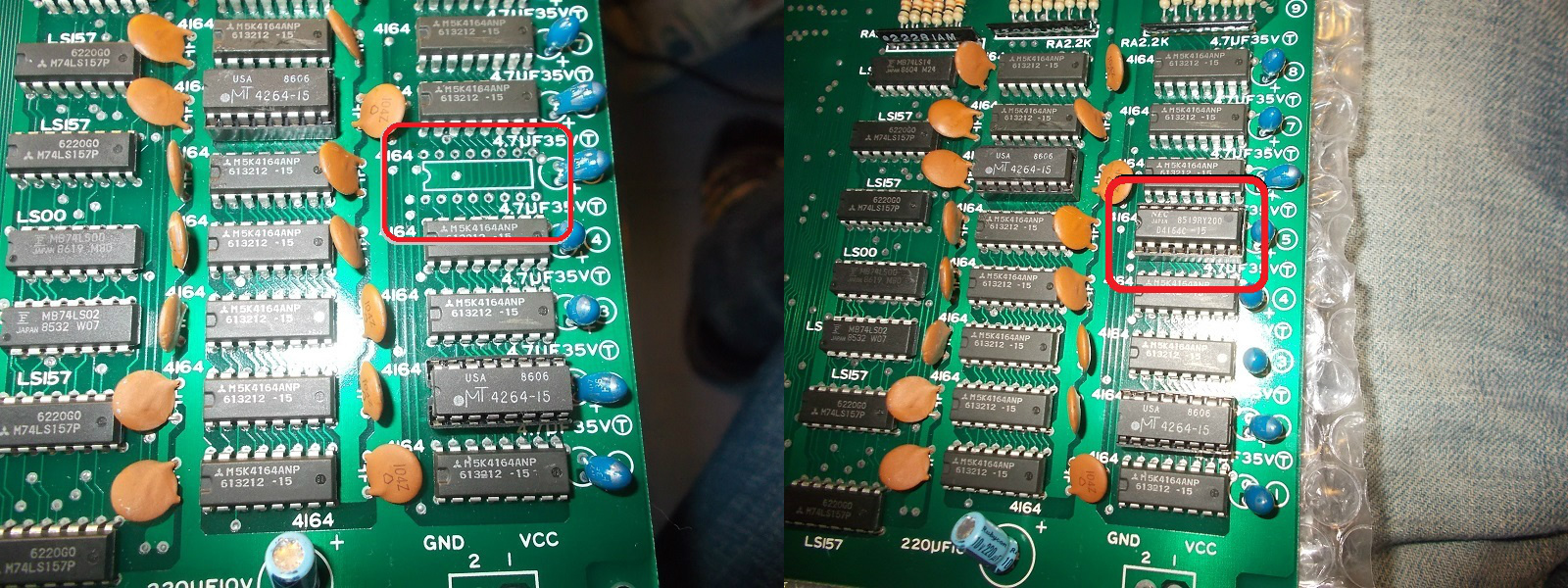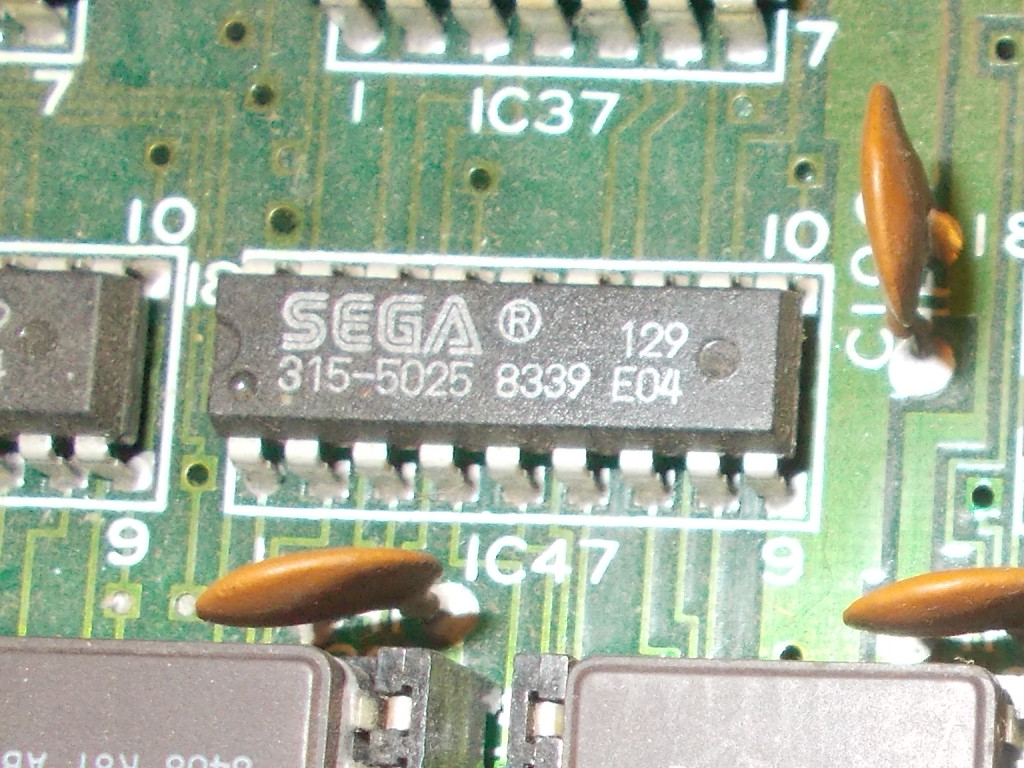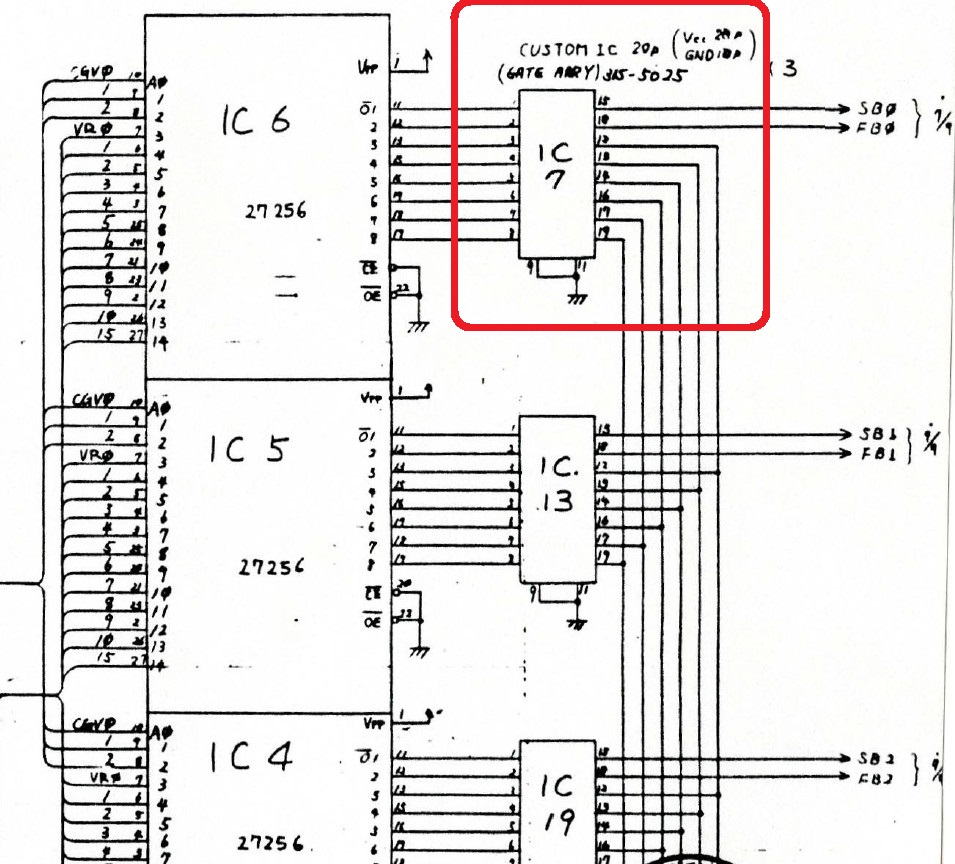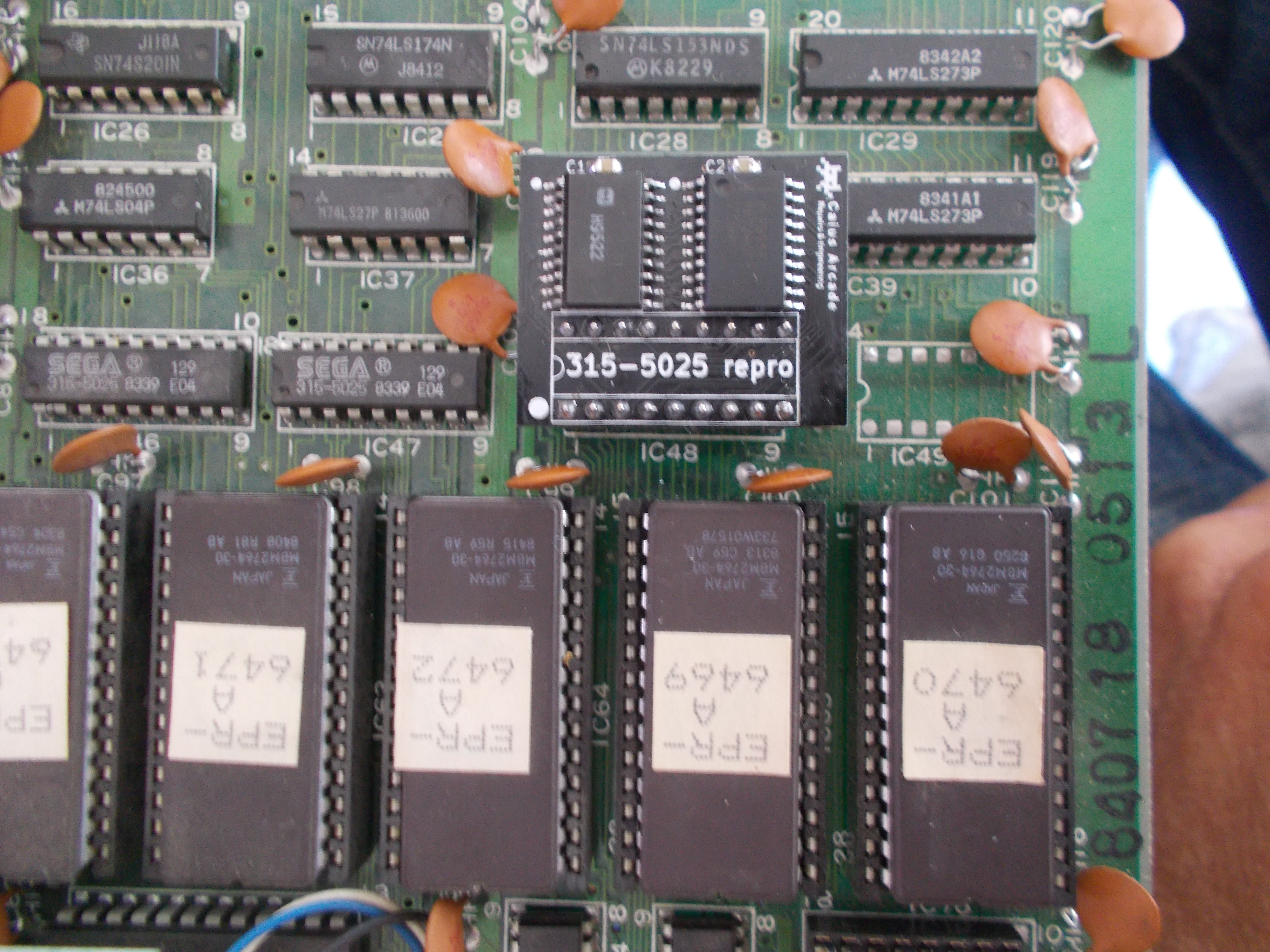I had a couple of original Capcom ‘1942’ PCBs lying around which I never tested due to the lack of a proper JAMMA adapter (game uses an unique pinout which is not the Capcom Classics one).Recently I had chance to build the adapter and try the boards out, it turned out both were faulty.
The first set was in good shape in its CPU board :
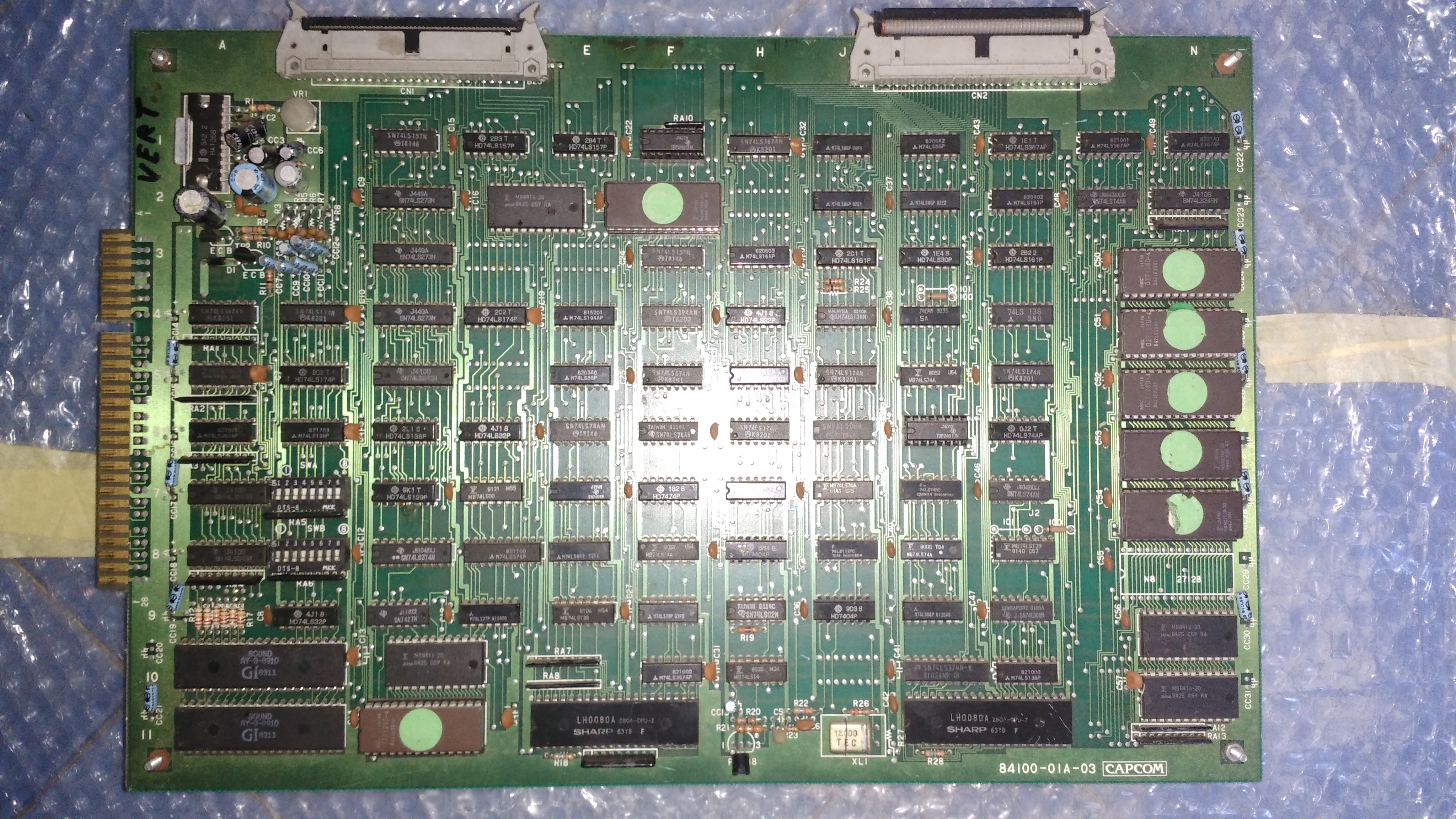
And VIDEO board:
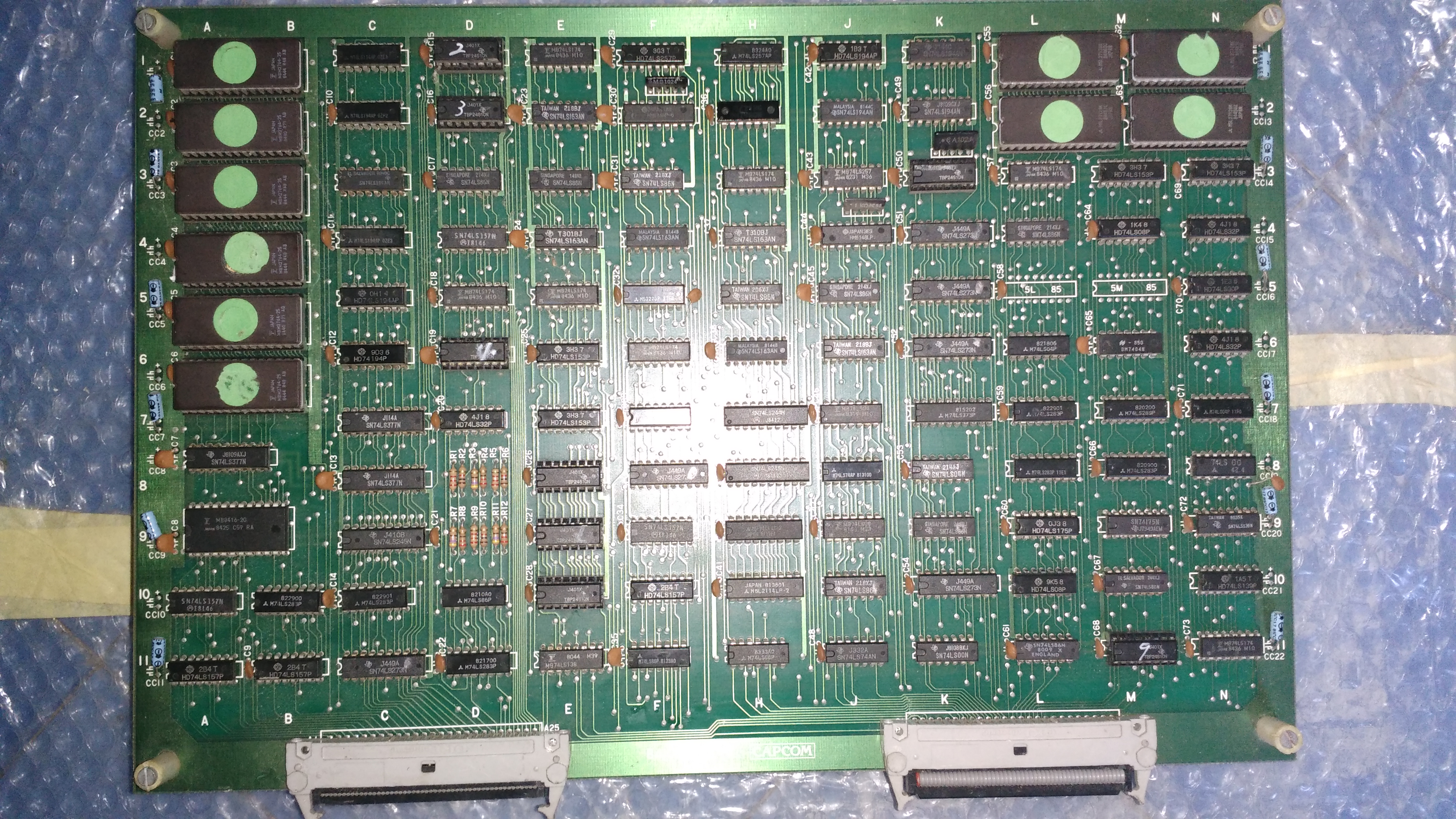
It even booted up and played with sound too but sprites (planes) were totally absent:
The faulty was obviously located on VIDEO board so I went through schematics and found a part of the object circuit highlighted with an handwritten note saying “NO PLANES”

The circled section concerned two NAND gates of a 74LS00 @N8 which generates two signals labeled ‘1WR’ and ‘2WR’.When I probed the inputs I found pin 9 and 4 stuck HIGH:
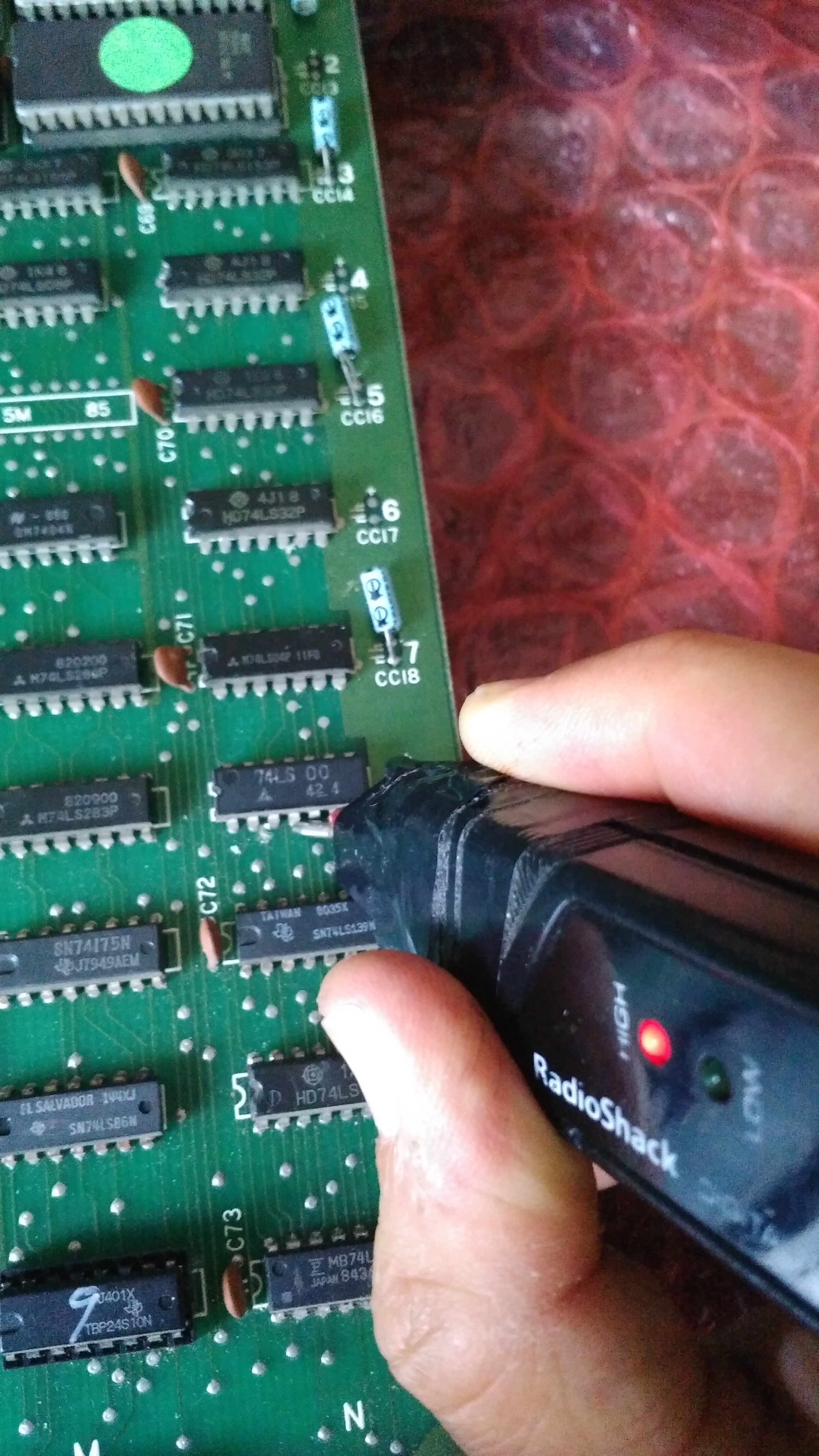
These inputs come from outputs of a 74LS139 @N10 which had its pin 1 floating:
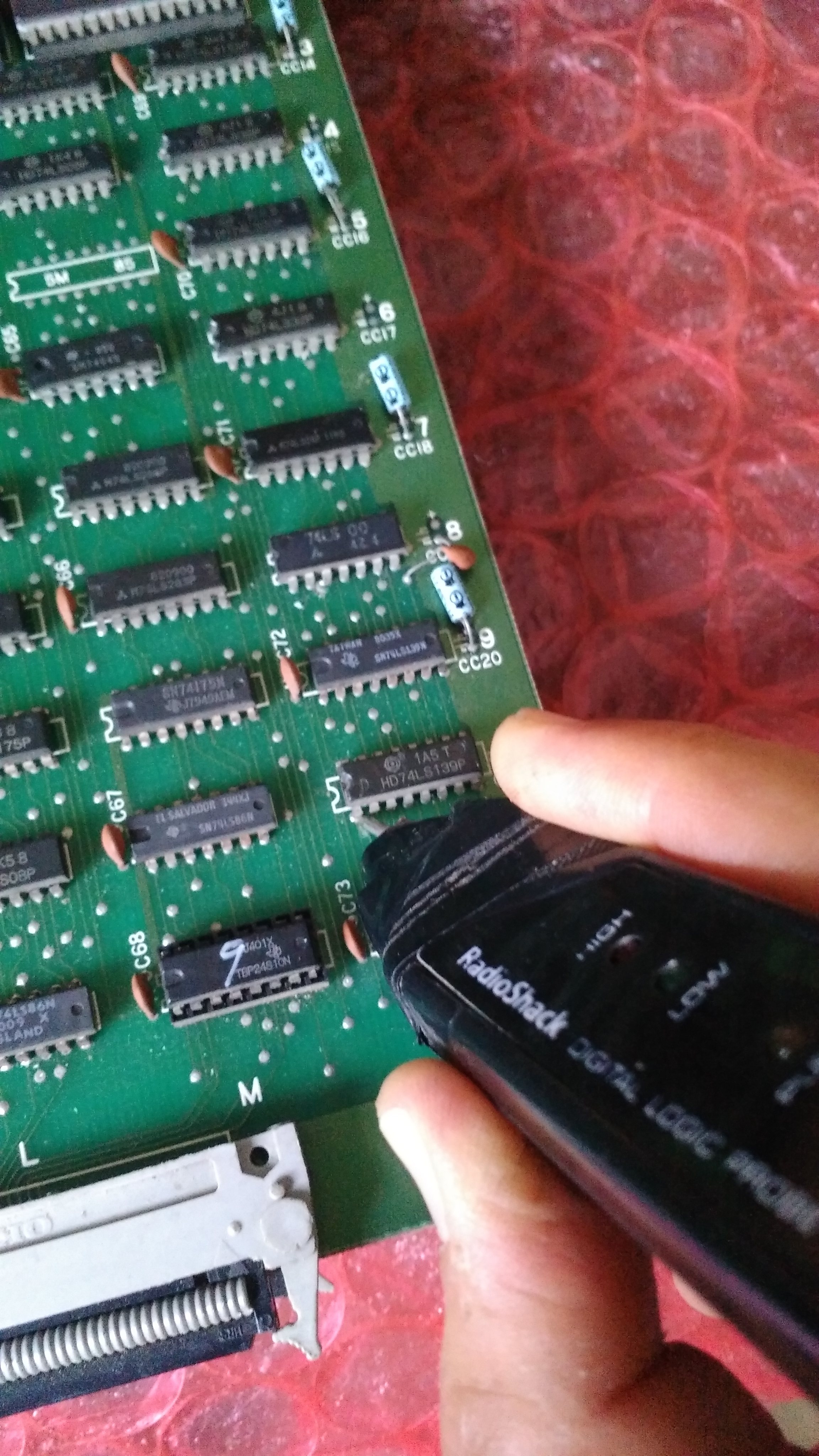
Pin 1 is the enable input of the decoder and comes from output pin 5 of a 74LS174 @N11 :
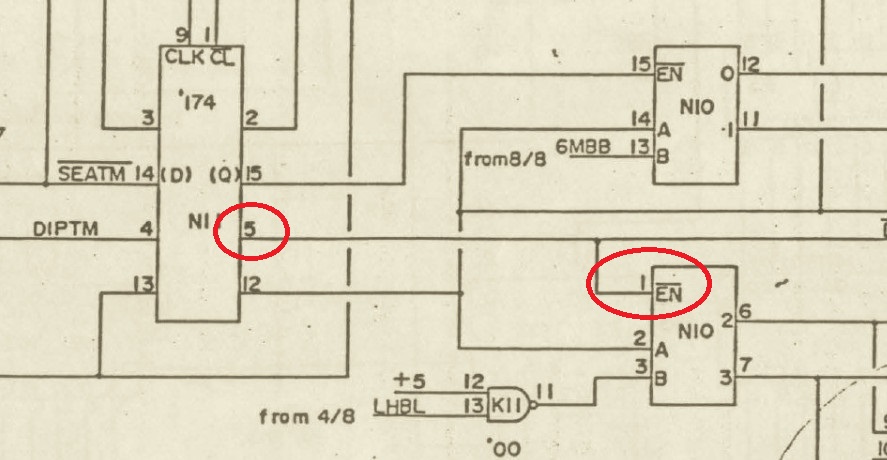
Pin 5 of this 74LS174 was indeed floating, stuck at undefined voltage level of +1.64V :
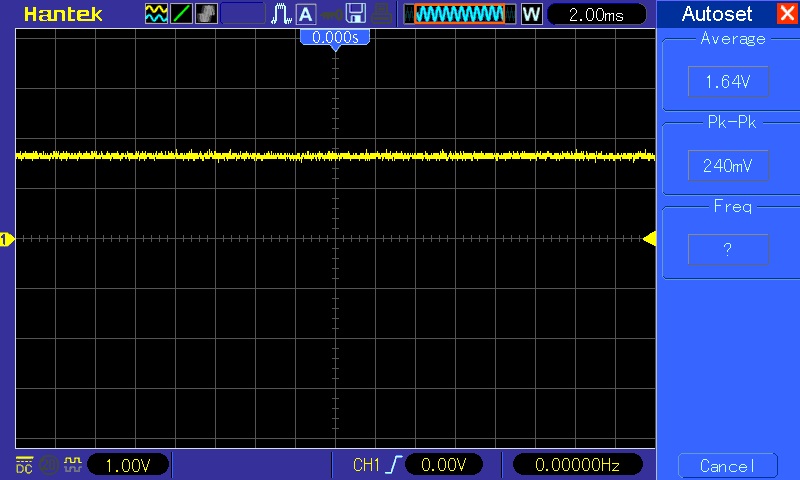
But the input pin 4 was active :
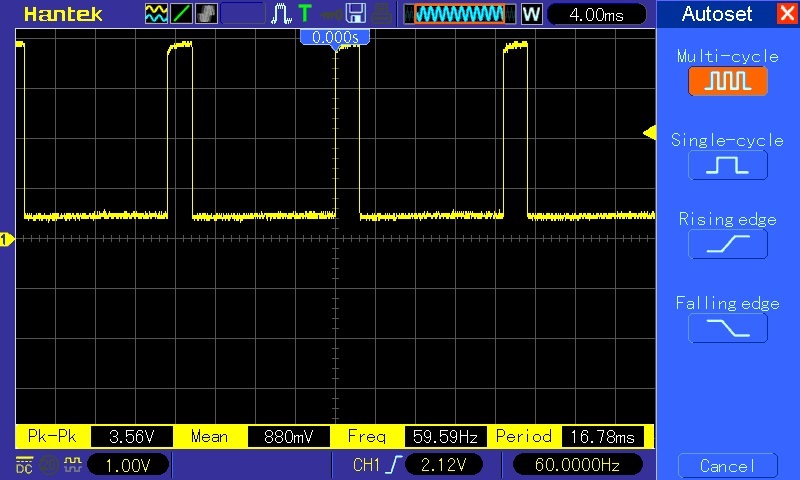
This is a typical way of failure of Fujitsu TTLs and the part was from this manufacturer hence , sure enough, I removed the chip.It miserably failed the out-of-circuit testing:
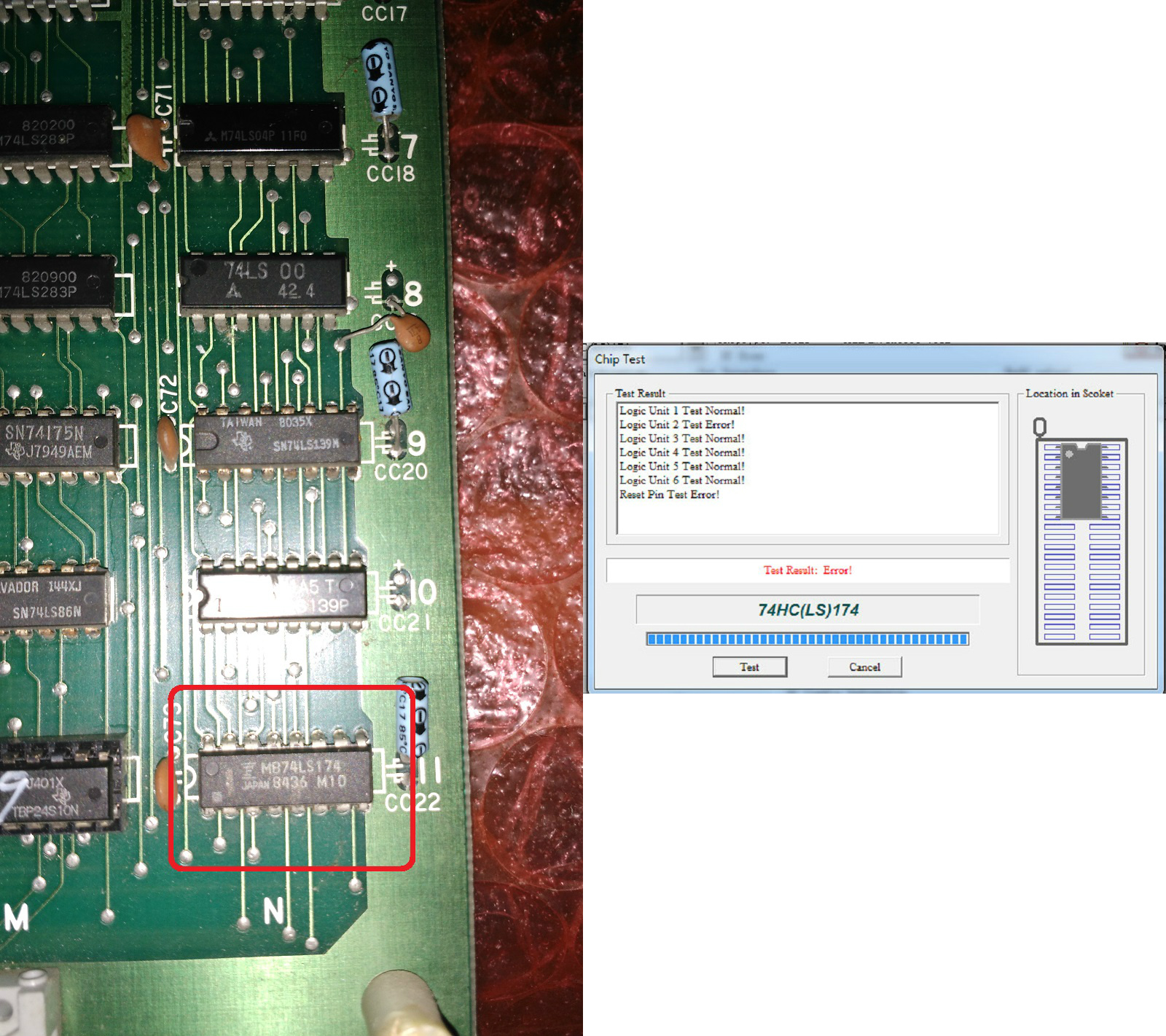
Replacing it restored the sprites :
![]()
First board fixed.
The second set was in good shape too :
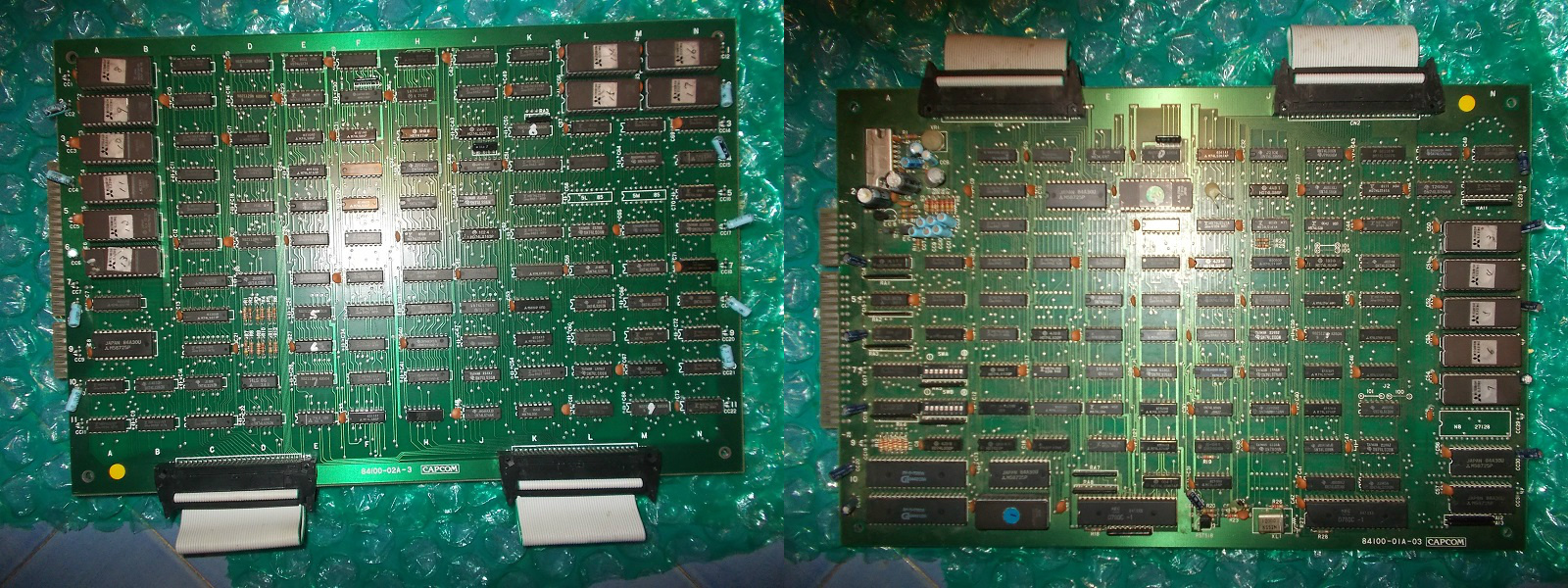
But it booted to a static garbage screen :

Probing the Z80 main CPU revealed clock input (pin 6) was stuck high:
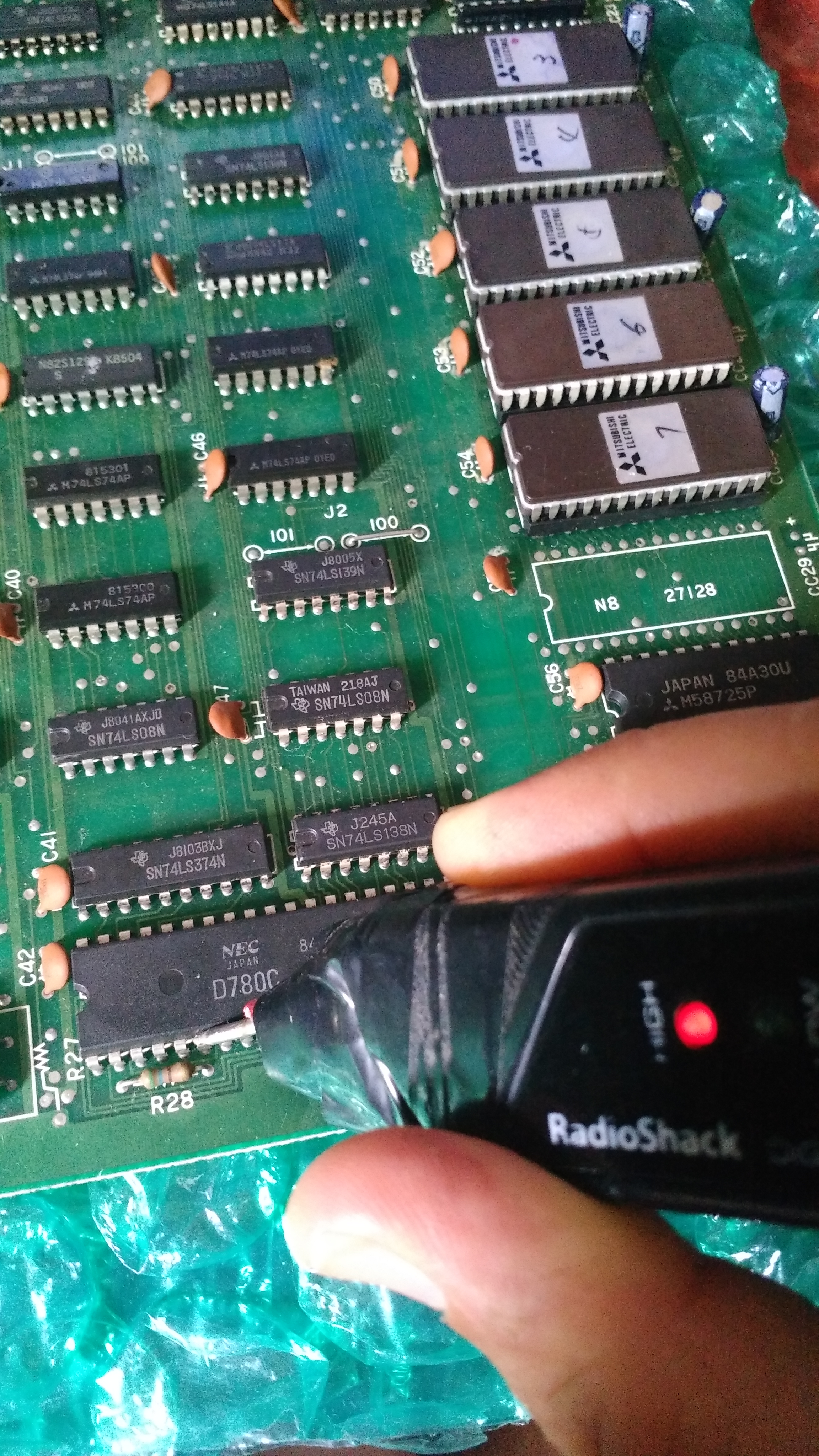
With the help of schematics I traced the clock input back to pin 7 of a 74LS174 @H6 located on CPU board, chip was again from Fujitsu :
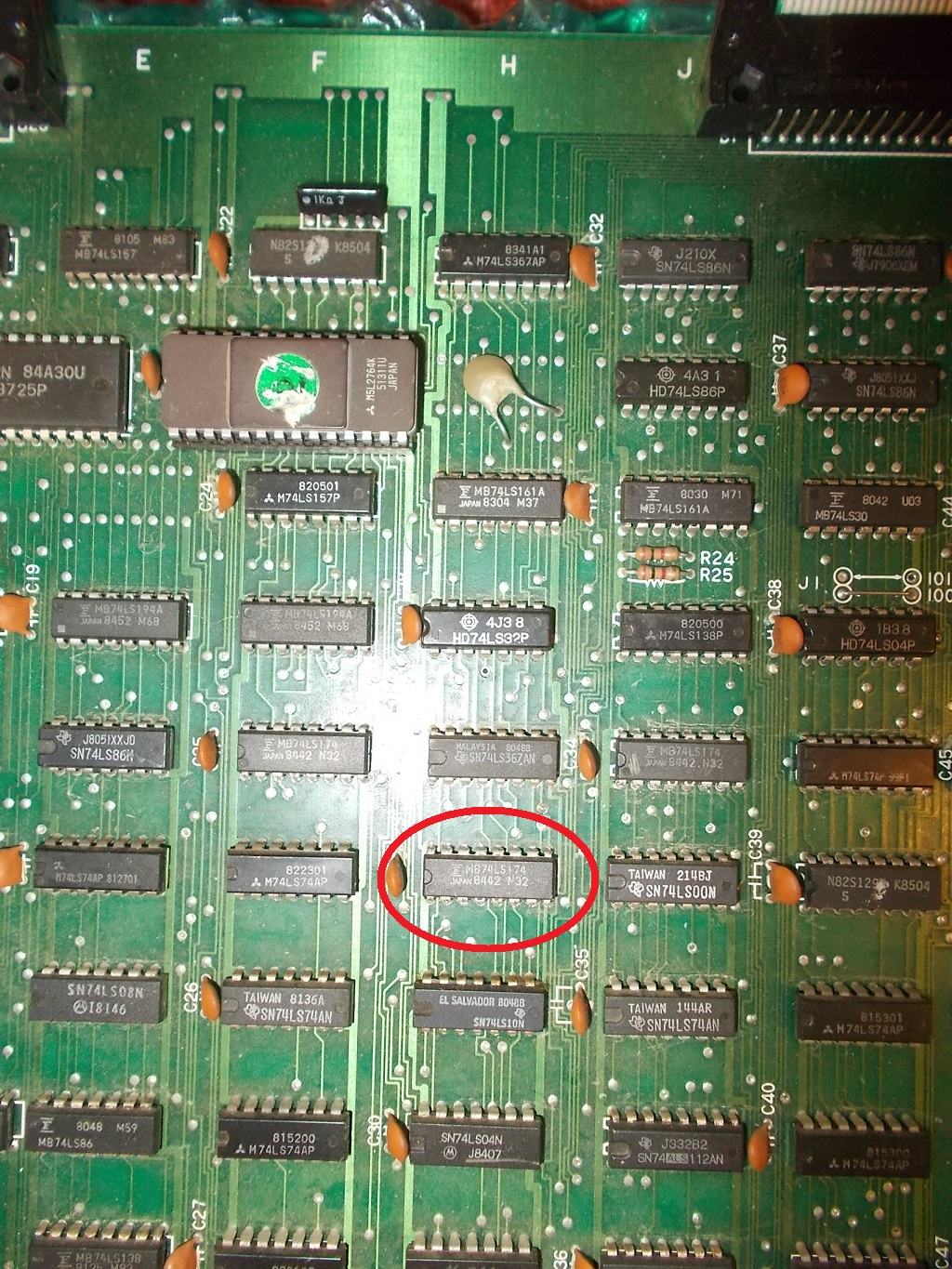
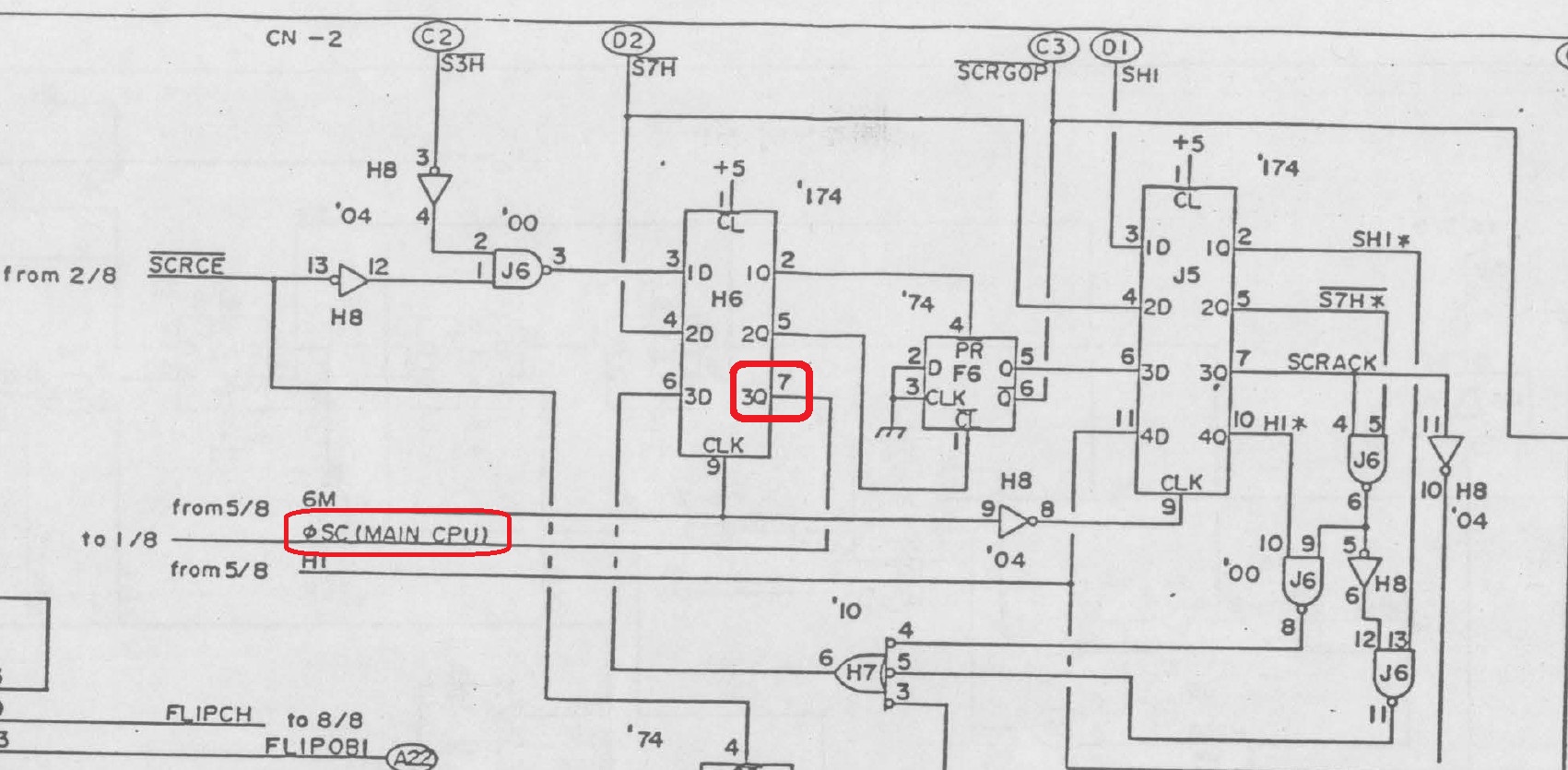
Input pin 6 was correctly receiving a 3 MHz signal:
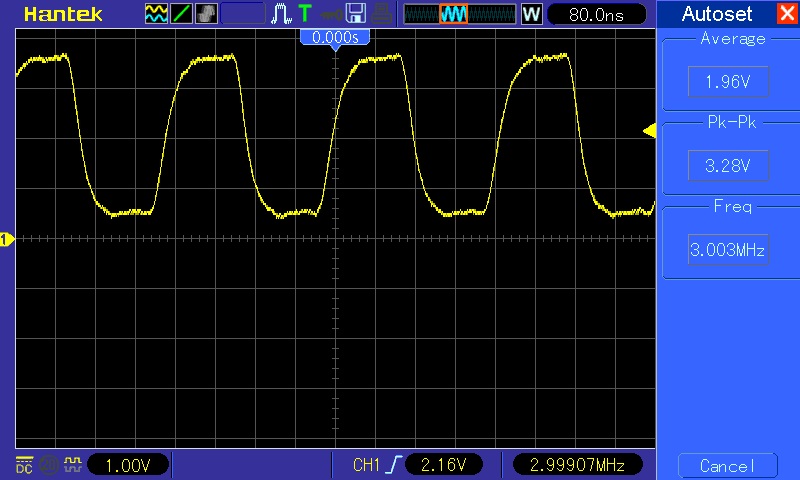
I made piggybacking with a good known IC and board succesfully booted into game:

Chip obviously failed the out-of-circuit testing:
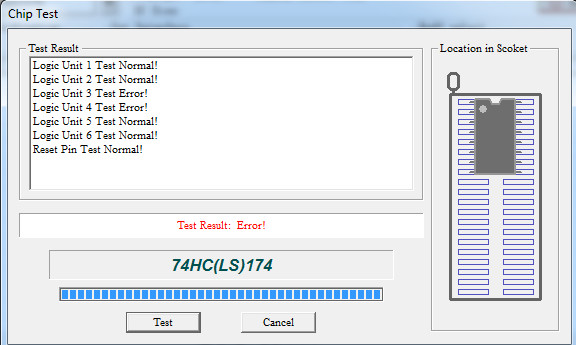
Replacing it fixed board completely.Double repair job done.



